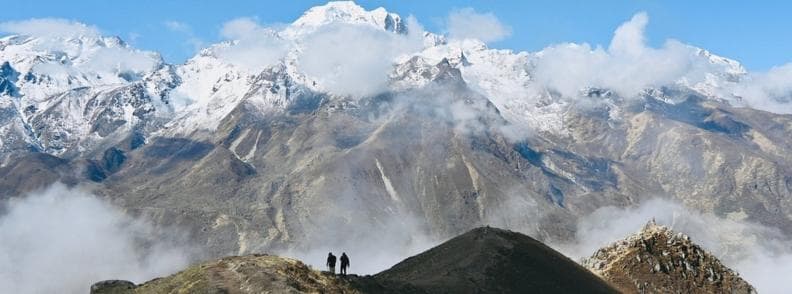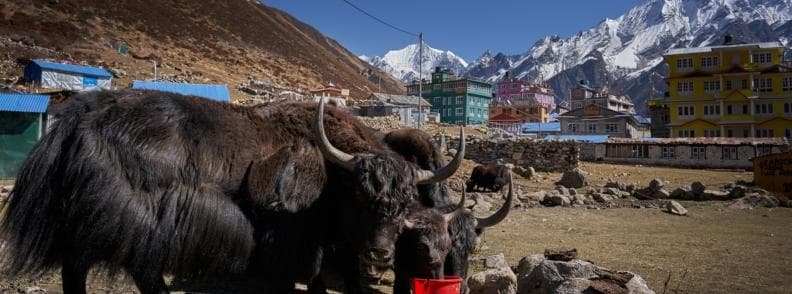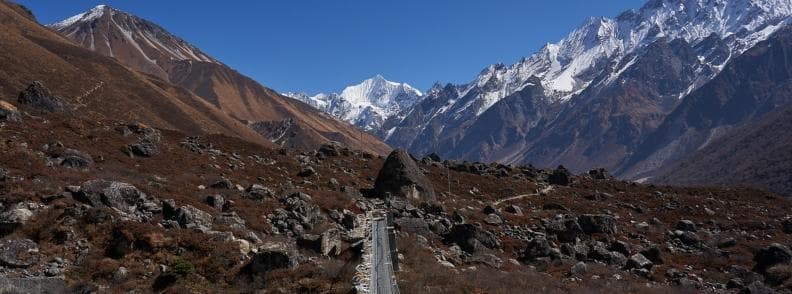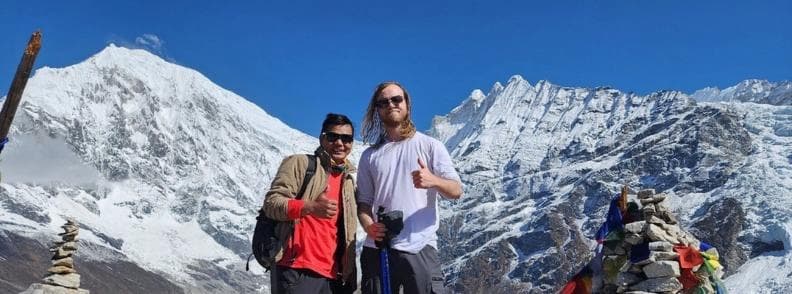The Langtang Valley Trek offers an incredible opportunity to explore the beauty of Nepal’s Himalayas while immersing yourself in its unique cultural and natural surroundings. The trek is known for its scenic views of snow-capped peaks, lush forests, and traditional villages that reflect the heritage of the Tamang people. Whether you’re planning your Langtang Valley Trek itinerary or just curious about how to prepare for this beautiful adventure, these 10 tips will help ensure you make the most of your journey.
Langtang Valley Trek Guide

1. Understand the Trek’s Difficulty Level
Before you lace up your boots, it’s crucial to assess the Langtang Valley Trek’s difficulty. Although it’s generally considered a moderate trek, the altitude and varied terrain can still pose challenges. The trek reaches a maximum altitude of 5,000 meters at Kyanjin Ri and Tsergo Ri, which can affect anyone unfamiliar with high-altitude trekking.
How to Prepare
- Cardiovascular fitness is key. Regular aerobic exercise such as running or cycling will help prepare your body for the physical demands.
- Leg strength is important too, as the terrain includes steep ascents and descents.
While no technical climbing skills are needed, basic fitness and an understanding of the trek’s difficulty will ensure you’re mentally and physically prepared.

2. Acclimatization is Essential
One of the most important factors to consider when planning your Langtang Valley Trek itinerary is acclimatization. The trek takes you into higher elevations, where the air is thinner. Altitude sickness can affect anyone, regardless of age or fitness level, so it’s essential to allow your body time to adjust to the changing conditions.
Acclimatization Tips
- Climb high, sleep low. As you gain elevation, take a few days to rest at key locations such as Langtang Village and Kyanjin Gompa.
- Stay hydrated. Proper hydration helps with acclimatization. Drink at least 3-4 liters of water per day.
- Pace yourself. Avoid rushing and maintain a comfortable pace, especially on steep ascents.

3. Pack Smart for the Langtang Valley Trek
Packing can make or break your trekking experience. While you don’t need to carry heavy gear, it’s crucial to have the right equipment for comfort and safety along the Langtang Valley Trek. The weather can be unpredictable, so it’s best to prepare for all eventualities.
Essential Packing Items
- Clothing layers. Pack lightweight, breathable clothing that can be layered. A waterproof jacket, fleece, and insulated layers for higher altitudes are must-haves.
- Footwear. Sturdy, waterproof trekking boots with ankle support will be your best friend on the rugged trails.
- Water bottles and purification tablets. Clean water is essential. Carry your own bottles and water treatment options like purification tablets or a filter.
- First aid kit. A basic first aid kit with blister care, painkillers, and altitude sickness medication is always a good idea.
4. Best Time to Trek Langtang Valley
Timing is everything when planning your Langtang Valley Trek itinerary. The best months to trek are during the spring (March to May) and autumn (September to November). During these seasons, the weather is generally stable, with clear skies and moderate temperatures. However, different seasons offer distinct experiences.
Seasonal Insights
- Spring (March to May). The weather is mild, and the valley is covered in vibrant wildflowers, including rhododendrons. It’s an excellent time for those looking for a peaceful, scenic hike.
- Autumn (September to November). Clear skies and crisp weather make this peak trekking season. The mountains are beautifully illuminated, providing spectacular views.
Avoid These Times
- Monsoon (June to August). The trail becomes slippery and difficult due to heavy rains.
- Winter (December to February). While the landscapes are stunning, the cold temperatures, especially at higher altitudes, may not be comfortable.
5. Embrace Local Culture and Traditions
Langtang Valley is home to the Tamang people, who follow Tibetan Buddhism. As you trek through this region, you’ll encounter Buddhist prayer flags, chortens (stupas), and traditional monasteries. It’s important to respect local customs and immerse yourself in the unique culture of the region.
Cultural Etiquette
- Respect religious sites. Be mindful of sacred spaces like monasteries and prayer wheels. Don’t disturb these sites, and always walk around them clockwise.
- Engage with locals. Take the time to talk to the villagers and learn about their culture and way of life. Many of the teahouses are run by local families.
- Photography etiquette. Always ask permission before taking photos of people or religious sites.
6. Take Your Time on the Trail
While the goal is to reach the Langtang Valley, the journey itself is just as important. The trek offers incredible views of the Langtang Lirung, Ganesh Himal, and other peaks. It’s easy to rush through the trail, but taking your time will enhance the experience and help you avoid exhaustion.
How to Slow Down
- Incorporate rest days. Plan for a full rest day at Kyanjin Gompa to allow your body to acclimatize and to explore the area.
- Take regular breaks. Stop to admire the views, take pictures, or simply catch your breath along the way.
7. Expect Basic Accommodation Along the Trek
Accommodation along the Langtang Valley Trek consists of simple teahouses run by locals. While these teahouses provide a bed and meals, they are basic, with shared rooms and communal bathrooms.
What You Can Expect
- Shared rooms and basic bedding. Bring your own sleeping bag for extra warmth.
- Limited electricity. Most teahouses have power only during the evening hours, and charging your devices may incur a small fee.
- Simple meals. Expect rice, dal bhat (lentil soup with rice), noodles, and momo (dumplings) as staples.
How to Adapt
- Bring your own toiletries. Some teahouses may not provide them, so pack accordingly.
- Cash is necessary. Many teahouses do not accept cards, so ensure you carry enough cash.
8. Stay Healthy: Managing Health and Hygiene
Staying healthy on the trail is crucial, particularly when you’re trekking at high altitudes. Basic hygiene and health practices will ensure you avoid common trekking ailments such as stomach bugs and altitude sickness.
Tips for Staying Healthy
- Wash your hands regularly to avoid contamination.
- Carry a water purifier. Avoid drinking untreated water by using purification tablets or a filter.
- Eat well-balanced meals. Stick to hot, freshly cooked food to prevent foodborne illnesses.
9. Be Ready for Weather Changes
The weather in the Langtang Valley can change rapidly, especially at higher altitudes. You might experience sunshine, rain, or snow all within the same day. Being prepared for these fluctuations will help you stay comfortable throughout the trek.
How to Prepare
- Pack weather-appropriate gear. Be sure to carry a waterproof jacket, warm layers, and sun protection.
- Check the forecast. While weather predictions may not always be accurate in the mountains, checking the forecast in Kathmandu before you leave will help you plan.
10. Book Your Trek with a Reputable Guide or Agency
While it’s possible to trek the Langtang Valley independently, having a guide or booking through a reputable agency can enhance your experience. A guide can help with navigation, offer insight into the local culture, and provide invaluable support if any issues arise.
Why Book with a Guide
- Local expertise. A guide will know the trail and surrounding areas well, ensuring a smooth and safe journey.
- Safety. Guides can help with altitude sickness and medical emergencies.
- Cultural insights. Your guide can share knowledge about the Tamang community, Buddhist traditions, and the history of the valley.
Ready for the Langtang Valley Trek?
The Langtang Valley Trek is an incredible journey that combines stunning natural beauty, fascinating culture, and the thrill of high-altitude trekking. By following these 10 tips, you’ll be well-equipped to make the most of your trek, ensuring safety, comfort, and a deeper connection to the incredible landscapes and people of Langtang Valley.
Whether you’re drawn to the breathtaking views of snow-capped peaks or the charm of the local villages, the Langtang Valley Trek will surely be an experience you’ll remember for a lifetime. So, are you ready to embark on one of Nepal’s most spectacular treks? Join us today.
About the Author

I’m Mirela Letailleur, a travel writer and creator of The Travel Bunny. I write practical, no-fluff guides for independent travelers who want more than just ticking boxes. I’m also the author of several itinerary eBooks covering offbeat routes across Europe and beyond. With years of experience hiking and solo traveling, I focus on slow travel, local culture, and smart planning. When I’m not on the road or writing, you’ll find me researching the next hidden gem worth your time — and your steps.
After planning the Langtang Valley Trek, check out these articles on The Travel Bunny
Everest Base Camp Trek 2025: Ultimate Preparation Guide for an Epic Adventure
Thrill Seekers’ Top 20 Travel Destinations for Extreme Adventures
Adventurous Sports in the UK: Top 9 Thrilling Activities to Try

